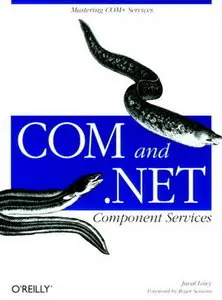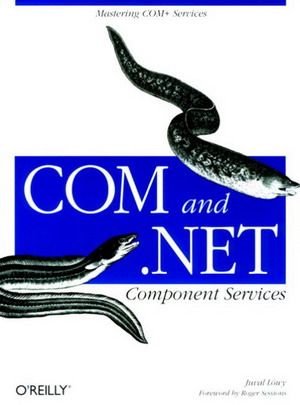Juval Löwy, "COM and .NET Component Services"
Publisher: O'Reilly Media, Inc. 2001 | 384 Pages | ISBN: 0596001037 | PDF | 3 MB
Publisher: O'Reilly Media, Inc. 2001 | 384 Pages | ISBN: 0596001037 | PDF | 3 MB
Aimed at the more experienced developer or Windows administrator responsible for deployment, COM and .NET Component Services provides an expert guide to getting the most out of COM+ services on the Windows 2000/XP platform, including material on the new .NET platform. This guide will help you create state-of-the-art, scalable Windows components that take full advantage of transactions, object pooling, and powerful administrative features available in COM+.
While Microsoft is about to replace COM components with the new .NET standard, COM+ is still a viable technology and will be fully supported (and even enhanced) in the new .NET Framework. Much of COM and .NET Component Services concentrates on C++ and Visual Basic examples that explore areas of functionality, plus practical tips for configuring and administering components with such tools as the COM+ Services Explorer.
The expert perspective here will help you design components that work with COM+ effectively. There is plenty of background material on COM+ topics like marshaling and interception, which allow objects to be pooled behind the scenes on the Windows platform. But the focus is on the real APIs and programming techniques developers need to work with COM+. This practical focus extends to specific suggestions and pitfalls to avoid for each area of COM+ development. There is good material on COM+ transactions here, along with some excellent material on asynchronous components that tap COM+ queuing capabilities.
The book concludes with a long chapter on .NET, which brings this title current with Microsoft's new programming platform. The author recaps the APIs covered earlier in the book using .NET and C#. (COM+ is still a part of .NET, but you'll use a different set of APIs and programming language to work with it.) The book concludes with a glance at new COM+ 1.5 features, plus a quick introduction to .NET.
In all, this title strikes a good balance between the old and the new. After reading this smart and fast-moving text, developers will be able to immediately learn COM+ skills that will have practical benefit for both current and future Windows software
Please appreciate my work, download from my references!!!



